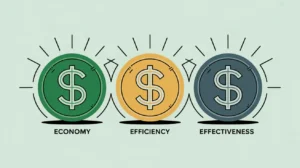Importance of Financial Assumptions
Financial assumptions form the backbone of nonprofit financial planning, especially in pro forma statements, budgets, and strategic forecasts. They provide the underlying logic that guides revenue projections, expense estimates, and funding outlooks. For organizations working in social innovation and international development, assumptions are critical because they bridge uncertain realities with practical decision-making. Every plan, from a small grant budget to a multi-year strategic initiative, relies on assumptions about donor behavior, program costs, inflation, and exchange rates. These assumptions matter because they influence how leaders interpret future risks and opportunities, allocate resources, and communicate with stakeholders. In an environment shaped by scarcity, competition, and global volatility, clear and well-documented financial assumptions help reduce information asymmetry, enabling boards, funders, and managers to understand not only the numbers but also the rationale behind them.
Definition and Features
Financial assumptions are the stated expectations that underlie financial models, forecasts, and budgets. They can include macroeconomic factors (inflation, interest rates, currency fluctuations), organizational factors (staffing growth, fundraising efficiency, program scale), and external factors (donor trends, policy changes, local market costs). They are not guarantees, but reasoned estimates that provide structure for planning. Unlike financial statements, which are retrospective records, assumptions are forward-looking and hypothetical. They do not belong on audited statements but rather in budgets, proposals, and management discussions. Documenting assumptions is essential for transparency because it clarifies how numbers were derived and ensures that stakeholders can interpret financial projections accurately. Without clear assumptions, financial forecasts risk becoming unrealistic, misleading, or detached from organizational strategy.
How this Works in Practice
In practice, nonprofits articulate financial assumptions at the start of budget and pro forma development. For example, a budget may assume a 10% growth in unrestricted contributions, a stable exchange rate, or a 5% increase in program participant numbers. These assumptions guide line-item estimates, inform scenario planning, and allow for sensitivity testing. Finance staff often build multiple scenarios (optimistic, base case, and pessimistic) each anchored in different sets of assumptions. This process enables leadership to assess how changes in donor behavior, grant renewal rates, or cost inflation might affect financial sustainability. Well-documented assumptions also support accountability: if actual results diverge, leaders can analyze whether the assumptions were flawed or whether execution fell short. Funders increasingly expect nonprofits to articulate financial assumptions in grant applications, recognizing that the credibility of a budget depends on the realism of the estimates behind it.
Implications for Social Innovation
For mission-driven organizations, financial assumptions are both a technical requirement and a strategic communication tool. They allow leaders to show funders, partners, and boards not only what they expect to achieve but also the reasoning behind their financial projections. In social innovation and international development, assumptions are particularly important because of external uncertainties such as currency volatility, donor cycles, and policy shifts that directly affect cash flow and sustainability. By making assumptions explicit, organizations can build trust, foster shared understanding, and reduce asymmetry between finance teams and program stakeholders. Moreover, documenting and revisiting assumptions allows organizations to adapt when conditions change, ensuring that planning remains responsive and grounded. In this way, financial assumptions become a tool for resilience, helping nonprofits align financial strategy with mission in an unpredictable world.







